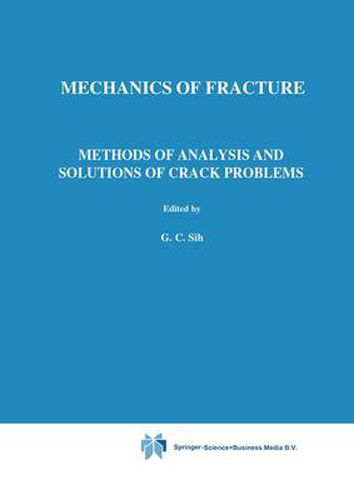Readings Newsletter
Become a Readings Member to make your shopping experience even easier.
Sign in or sign up for free!
You’re not far away from qualifying for FREE standard shipping within Australia
You’ve qualified for FREE standard shipping within Australia
The cart is loading…






This title is printed to order. This book may have been self-published. If so, we cannot guarantee the quality of the content. In the main most books will have gone through the editing process however some may not. We therefore suggest that you be aware of this before ordering this book. If in doubt check either the author or publisher’s details as we are unable to accept any returns unless they are faulty. Please contact us if you have any questions.
It is weH known that the traditional failure criteria cannot adequately explain failures which occur at a nominal stress level considerably lower than the ultimate strength of the material. The current procedure for predicting the safe loads or safe useful life of a structural member has been evolved around the discipline oflinear fracture mechanics. This approach introduces the concept of a crack extension force which can be used to rank materials in some order of fracture resistance. The idea is to determine the largest crack that a material will tolerate without failure. Laboratory methods for characterizing the fracture toughness of many engineering materials are now available. While these test data are useful for providing some rough guidance in the choice of materials, it is not clear how they could be used in the design of a structure. The understanding of the relationship between laboratory tests and fracture design of structures is, to say the least, deficient. Fracture mechanics is presently at astandstill until the basic problems of scaling from laboratory models to fuH size structures and mixed mode crack propagation are resolved. The answers to these questions require some basic understanding ofthe theory and will not be found by testing more specimens. The current theory of fracture is inadequate for many reasons. First of aH it can only treat idealized problems where the applied load must be directed normal to the crack plane.
$9.00 standard shipping within Australia
FREE standard shipping within Australia for orders over $100.00
Express & International shipping calculated at checkout
Stock availability can be subject to change without notice. We recommend calling the shop or contacting our online team to check availability of low stock items. Please see our Shopping Online page for more details.
This title is printed to order. This book may have been self-published. If so, we cannot guarantee the quality of the content. In the main most books will have gone through the editing process however some may not. We therefore suggest that you be aware of this before ordering this book. If in doubt check either the author or publisher’s details as we are unable to accept any returns unless they are faulty. Please contact us if you have any questions.
It is weH known that the traditional failure criteria cannot adequately explain failures which occur at a nominal stress level considerably lower than the ultimate strength of the material. The current procedure for predicting the safe loads or safe useful life of a structural member has been evolved around the discipline oflinear fracture mechanics. This approach introduces the concept of a crack extension force which can be used to rank materials in some order of fracture resistance. The idea is to determine the largest crack that a material will tolerate without failure. Laboratory methods for characterizing the fracture toughness of many engineering materials are now available. While these test data are useful for providing some rough guidance in the choice of materials, it is not clear how they could be used in the design of a structure. The understanding of the relationship between laboratory tests and fracture design of structures is, to say the least, deficient. Fracture mechanics is presently at astandstill until the basic problems of scaling from laboratory models to fuH size structures and mixed mode crack propagation are resolved. The answers to these questions require some basic understanding ofthe theory and will not be found by testing more specimens. The current theory of fracture is inadequate for many reasons. First of aH it can only treat idealized problems where the applied load must be directed normal to the crack plane.